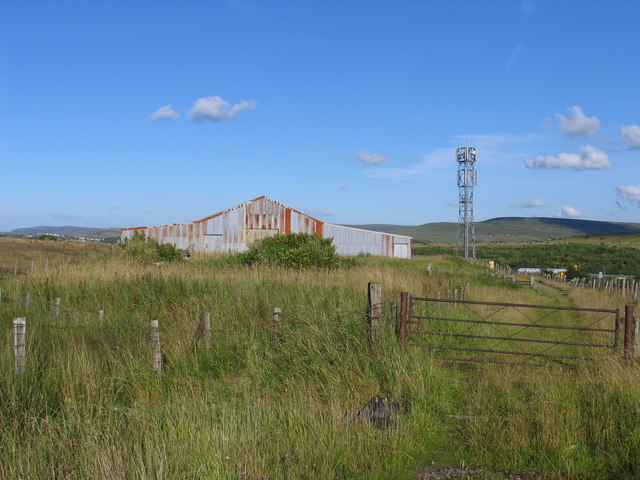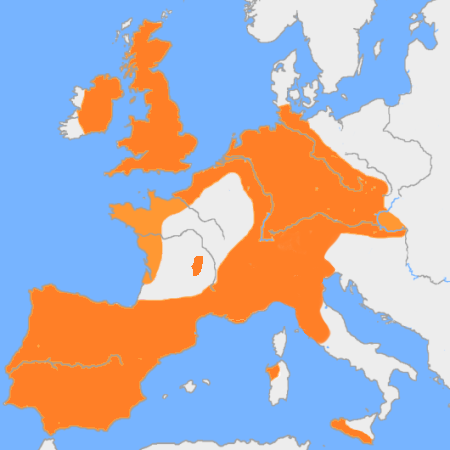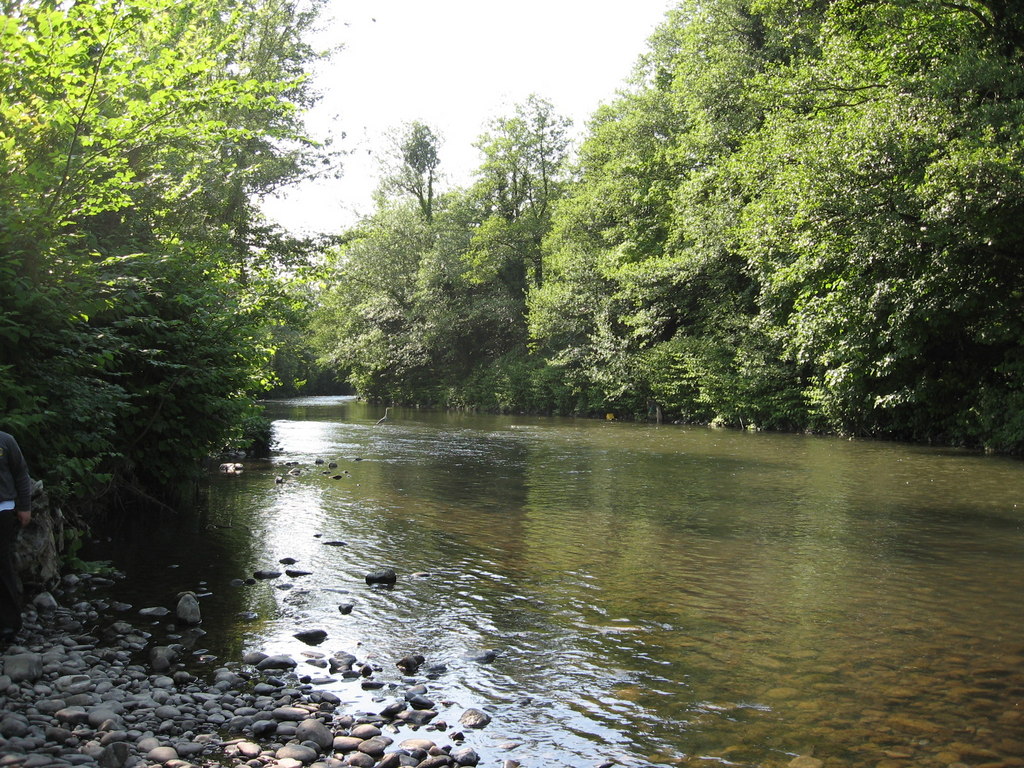|
Ebbw Vale
Ebbw Vale (; ) is a town at the head of the valley formed by the Ebbw Fawr tributary of the Ebbw River in Wales. It is the largest town and the administrative centre of Blaenau Gwent county borough. The Ebbw Vale and Brynmawr conurbation has a population of roughly 33,000. It has direct access to the dualled A465 road, A465 Heads of the Valleys trunk road and borders the Brecon Beacons National Park. Welsh language According to the United Kingdom Census 2011, 2011 Census, 4.6% of Ebbw Vale North's 4,561 (210 residents) resident-population can speak, read, and write Welsh language, Welsh, and 5.7% of Ebbw Vale South's 4,274 (244 residents) resident-population can speak, read, and write Welsh. This is below the Blaenau Gwent, county's figure of 5.5% of 67,348 (3,705 residents) who can speak, read, and write Welsh language, Welsh. Early history There is evidence of very early human activity in the area. List of Scheduled Monuments in Blaenau Gwent, Y Domen Fawr is a Bronze Age Br ... [...More Info...] [...Related Items...] OR: [Wikipedia] [Google] [Baidu] |
Ebbw Vale Steelworks
Ebbw Vale Steelworks was an integrated steel mill located in Ebbw Vale, South Wales. Developed from 1790, by the late 1930s it had become the largest steel mill in Europe. It was nationalised after World War II. As the steel industry changed to bulk handling, iron and steel making was ceased in the 1970s, and the site was redeveloped as a specialised tinplate works. It was closed by Corus Group plc, Corus in 2002, but is being redeveloped in a joint partnership between Blaenau Gwent County Borough Council, Blaenau Gwent Council and the Welsh Government. Development By the mid to late 1700s, the steep-sided wooded valley of the River Ebbw, Ebbw Fawr river was home to a population of around 120, who worked the valley as farmers. In 1789, Walter Watkins was the owner of a forge in Glangrwney, near Crickhowell, which lacked an adequate supply of pig iron from the Clydach Ironworks. In agreement with two business partners, his son-in-law Charles Cracroft and iron master Jeremiah Homf ... [...More Info...] [...Related Items...] OR: [Wikipedia] [Google] [Baidu] |
Blaenau Gwent
Blaenau Gwent (; ) is a Principal areas of Wales, county borough in the South East Wales, south-east of Wales. It borders the Local government in Wales, unitary authority areas of Monmouthshire and Torfaen to the east, Caerphilly County Borough, Caerphilly to the west and Powys to the north. Its main towns are Abertillery, Brynmawr, Ebbw Vale and Tredegar. Its highest point is Coity Mountain at . Government The borough was formed in 1974 as a local government Districts of Wales, district of Gwent (county), Gwent. It covered the whole area of five former districts and a single parish from a sixth, which were all abolished at the same time: *Abertillery Urban district (Great Britain and Ireland), Urban District *Brynmawr Urban District *Ebbw Vale Urban District *Llanelly parish from Crickhowell Rural District *Nantyglo and Blaina Urban District *Tredegar Urban District Brynmawr and Llanelly had been in the administrative county of Brecknockshire prior to the reforms, whilst the ot ... [...More Info...] [...Related Items...] OR: [Wikipedia] [Google] [Baidu] |
Bronze Age Britain
Bronze Age Britain is an era of British history that spanned from until . Lasting for approximately 1,700 years, it was preceded by the era of Neolithic Britain and was in turn followed by the period of Iron Age Britain. Being categorised as the Bronze Age, it was marked by the use of copper and then bronze by the prehistoric Britons, who used such metals to fashion tools. Great Britain in the Bronze Age also saw the widespread adoption of agriculture. During the British Bronze Age, large megalithic monuments similar to those from the Late Neolithic continued to be constructed or modified, including such sites as Avebury, Stonehenge, Silbury Hill and Must Farm. That has been described as a time "when elaborate ceremonial practices emerged among some communities of subsistence agriculturalists of western Europe". History Early Bronze Age (EBA), c. 2500–1500 BC There is no clear consensus on the date for the beginning of the Bronze Age in Great Britain and Ireland. Some ... [...More Info...] [...Related Items...] OR: [Wikipedia] [Google] [Baidu] |
World War II
World War II or the Second World War (1 September 1939 – 2 September 1945) was a World war, global conflict between two coalitions: the Allies of World War II, Allies and the Axis powers. World War II by country, Nearly all of the world's countries participated, with many nations mobilising all resources in pursuit of total war. Tanks in World War II, Tanks and Air warfare of World War II, aircraft played major roles, enabling the strategic bombing of cities and delivery of the Atomic bombings of Hiroshima and Nagasaki, first and only nuclear weapons ever used in war. World War II is the List of wars by death toll, deadliest conflict in history, causing World War II casualties, the death of 70 to 85 million people, more than half of whom were civilians. Millions died in genocides, including the Holocaust, and by massacres, starvation, and disease. After the Allied victory, Allied-occupied Germany, Germany, Allied-occupied Austria, Austria, Occupation of Japan, Japan, a ... [...More Info...] [...Related Items...] OR: [Wikipedia] [Google] [Baidu] |
Sydney Harbour Bridge
The Sydney Harbour Bridge is a steel through arch bridge in Sydney, New South Wales, Australia, spanning Port Jackson, Sydney Harbour from the Sydney central business district, central business district (CBD) to the North Shore (Sydney), North Shore. The view of the bridge, the Harbour, and the nearby Sydney Opera House is widely regarded as an iconic image of Sydney, and of Australia itself. Nicknamed "the Coathanger" because of its arch-based design, the bridge carries rail, vehicular, bicycle and pedestrian traffic. Under the direction of John Bradfield (engineer), John Bradfield of the NSW Public Works, New South Wales Department of Public Works, the bridge was designed and built by British firm Dorman Long of Middlesbrough, and opened in 1932. The bridge's general design, which Bradfield tasked the NSW Department of Public Works with producing, was a rough copy of the Hell Gate Bridge in New York City. The design chosen from the tender responses was original work created by ... [...More Info...] [...Related Items...] OR: [Wikipedia] [Google] [Baidu] |
Stockton And Darlington Railway
The Stockton and Darlington Railway (S&DR) was a railway company that operated in north-east England from 1825 to 1863. The world's first public railway to use steam locomotives, its first line connected coal mining, collieries near with and in County Durham, and was officially opened on 27 September 1825. The movement of coal to ships rapidly became a lucrative business, and the line was soon extended to a at Middlesbrough. While coal waggons were hauled by steam locomotives from the start, passengers were carried in coaches drawn by horses until carriages hauled by steam locomotives were introduced in 1833. The S&DR was involved in building the East Coast Main Line between and Darlington, but its main expansion was at Middlesbrough Docks and west into Weardale and east to Redcar. It suffered severe financial difficulties at the end of the 1840s and was nearly taken over by the York, Newcastle and Berwick Railway, before the discovery of iron ore in Cleveland, Yorkshi ... [...More Info...] [...Related Items...] OR: [Wikipedia] [Google] [Baidu] |
Coal Mine
Coal mining is the process of resource extraction, extracting coal from the ground or from a mine. Coal is valued for its Energy value of coal, energy content and since the 1880s has been widely used to Electricity generation, generate electricity. Steel and cement industries use coal as a fuel for extraction of iron from iron ore and for cement production. In the United Kingdom and South Africa, a coal mine and its structures are a colliery, a coal mine is called a "pit", and above-ground mining structures are referred to as a "pit head". In Australia, "colliery" generally refers to an underground coal mine. Coal mining has had many developments in recent years, from the early days of men tunneling, digging, and manually extracting the coal on carts to large Open-pit mining, open-cut and Longwall mining, longwall mines. Mining at this scale requires the use of Dragline excavator, draglines, trucks, conveyors, hydraulic jacks, and shearers. The coal mining industry has a long ... [...More Info...] [...Related Items...] OR: [Wikipedia] [Google] [Baidu] |
Ebbw Vale Steel Works In 1969 - Geograph
The Ebbw River (; ) is a river in South Wales which gives its name to the town of Ebbw Vale. The Ebbw River is joined by the Ebbw Fach River ( Welsh: Afon Ebwy Fach; meaning 'little Ebbw river') at Aberbeeg. The Ebbw Fach is itself fed by a left-bank tributary, the River Tyleri. The tributary Sirhowy River joins on the right bank at Crosskeys, then the river continues flowing south east, through the town of Risca, then through the western suburbs of Newport, alongside Tredegar Park. The tidal Ebbw joins with the estuarine River Usk seaward of Newport, before flowing into the Mouth of the Severn. In common with the nearby Sirhowy River and Rhymney River The Rhymney River () is a river in the Rhymney Valley, South Wales, flowing through Cardiff into the Severn Estuary. The river formed the boundary between the historic counties of Glamorgan and Monmouthshire until in 1887, the parishes ea ... the correct English name for the river is "Ebbw River", not the more usua ... [...More Info...] [...Related Items...] OR: [Wikipedia] [Google] [Baidu] |
Industrial Revolution
The Industrial Revolution, sometimes divided into the First Industrial Revolution and Second Industrial Revolution, was a transitional period of the global economy toward more widespread, efficient and stable manufacturing processes, succeeding the Second Agricultural Revolution. Beginning in Kingdom of Great Britain, Great Britain around 1760, the Industrial Revolution had spread to continental Europe and the United States by about 1840. This transition included going from craft production, hand production methods to machines; new Chemical industry, chemical manufacturing and Puddling (metallurgy), iron production processes; the increasing use of Hydropower, water power and Steam engine, steam power; the development of machine tools; and rise of the mechanisation, mechanised factory system. Output greatly increased, and the result was an unprecedented rise in population and population growth. The textile industry was the first to use modern production methods, and textiles b ... [...More Info...] [...Related Items...] OR: [Wikipedia] [Google] [Baidu] |
Monmouthshire (historic)
Monmouthshire ( ), also formerly known as the County of Monmouth ( ; ), was historic counties of Wales, one of the thirteen counties of Wales that existed from 1536 until their abolishment in 1974. Located in the South East Wales, south-east of Wales, on the England–Wales border, border with England, its area now corresponds approximately to the present principal areas of Wales, principal areas of Monmouthshire, Blaenau Gwent, Newport, Wales, Newport and Torfaen, and those parts of Caerphilly County Borough, Caerphilly and Cardiff east of the Rhymney River. The eastern part of the county was mainly agricultural, while the western valleys had rich mineral resources. This led to the area becoming highly industrialised with coal mining and iron working being major employers from the 18th century to the late 20th century. Its five largest towns were Newport, Cwmbran, Pontypool, Ebbw Vale and Abergavenny. Monmouthshire's Welsh status was ambiguous between the 16th and 20th centu ... [...More Info...] [...Related Items...] OR: [Wikipedia] [Google] [Baidu] |
Medieval Britain
During most of the Middle Ages (c. 410–1485 AD), the island of Great Britain was divided into multiple kingdoms. By the end of the period two remained: the Kingdom of England, of which Wales was a principality, and the Kingdom of Scotland. The following articles address this period of history in each of the nations of Great Britain: *England in the Middle Ages **Anglo-Saxon England (600–1066) **England in the High Middle Ages (1066 – c. 1216) **England in the Late Middle Ages (c. 1216 – 1485) *Scotland in the Middle Ages **Scotland in the Early Middle Ages (400–900) **Scotland in the High Middle Ages (900–1286) **Scotland in the Late Middle Ages (1286–1513) *Wales in the Middle Ages **Wales in the Early Middle Ages (c. 383 – c. 825) **Wales in the High Middle Ages Wales in the High Middle Ages covers the 11th to 13th centuries in Welsh history. Beginning shortly before the Norman invasion of the 1060s and ending with the Conquest of Wales by Edward I betwee ... [...More Info...] [...Related Items...] OR: [Wikipedia] [Google] [Baidu] |






